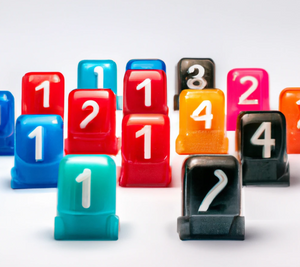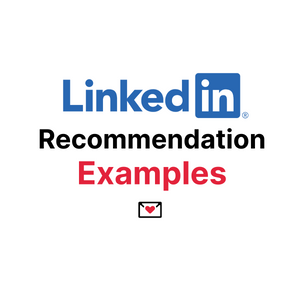If you've spent time on LinkedIn, you've likely seen that some profiles have a "Connect" button, and others have a "Follow" button. At first glance, you might think these buttons are interchangeable – after all, they both involve some sort of connection, right?
Well, not so fast! There's a whole world of differences and unique benefits behind these seemingly similar options.
So, in this article, I'm going to break it all down for you and clear up any confusion. I’ll explain each, so you can decide which option is best for you in your cold outreach efforts.
What’s a Connect on LinkedIn?
In the "follow vs. connect on LinkedIn" debate, let's start with a definition.
Connecting is the OG option on LinkedIn, the default one you'll encounter. When you hit that "Connect" button on someone's profile, you're essentially saying, "Hey, let's be LinkedIn buddies!"
Connections open up communication both ways. Once you're connected, you and your new LinkedIn pal can see what each other posts and shares on your respective feeds.
When you send a connection request, it's not automatically granted. The other party needs to accept your request, giving you the green light.
Now, I know what you're thinking: "Is there a limit to these connections? Can I just collect them like Pokémon cards?"
Well, almost – LinkedIn does cap out your connections at 30,000. Sounds like a lot, but it will fill up quickly when you’re sourcing prospects.
Another important note is that there are different connection “degrees,” as follows:
- 1st-degree: These are your direct LinkedIn pals – the people you've connected with directly.
- 2nd-degree: These are the friends of your friends, or in LinkedIn terms, the people who are connected to your 1st-degree connections. They're just one connection away!
- 3rd-degree: Expanding your network even further, these are the folks connected to your 2nd-degree connections.
With these connection degrees, your network can grow exponentially, opening doors to fresh opportunities.
What’s great about connections is that you can send InMails without paying for LinkedIn Premium or Sales Navigator.
What’s a Follow on LinkedIn?
On the other side of the coin, following is a one-sided relationship. You'll get to see their content, but your own posts and shares will remain hidden from them.
One of the most significant advantages of having followers on LinkedIn is that you can have an unlimited number of them. And each follower is a potential lead – someone who finds value in your content and could become a loyal customer or collaborator in the future.
You can also use the number of followers a person has as a handy metric to gauge their influence and reach.
Let's say you're eyeing a CEO to pitch your groundbreaking B2B product. Take a quick glance at their follower count.
If they've got a substantial following – like over 150,000 – they might have a busy inbox flooded with connection requests, and yours could get ignored.
Follow vs. Connect: How to Switch
Switching between “Connect” and “Follow” is as easy as a few simple steps. Here's what you need to do:
- Go to "Me" at the top of your LinkedIn screen and click "Settings & Privacy."
- Next, look on the left-hand side and click "Visibility."
- Now, let's scroll down to the bottom of the page, where you'll find the "Followers" section, and click.
- Finally, move the "Make Primary" slider to "Yes."
And that’s it! Now you’re ready for followers. But keep in mind, once you’re over 500 connections or turn on Creator Mode, LinkedIn will automatically swap it to “Follow.”
So if you want to go back, then you use this same process to change it to “Connect.”
How to Follow and Connect on LinkedIn
Following and connecting with someone works pretty much the same for either option. They just swap places depending on which button is front-facing on their profile.
First, go to their profile and click the “+Follow” button below their banner.
Then if you want to send them a connect, click the “More” button and then click “Connect.”
And it works the other way around too. If you see the “Connect” button first, then click “More” to start following them.
Follow vs Connect: Which Should You Choose?
Both options have their merits, but personally, I've got a soft spot for "Connect." Let me tell you why.
First and foremost, the more connections you have, the deeper you can dive into LinkedIn when prospecting and searching for potential leads.
For every 1st degree connection you have, you get access to their 2nd and 3rd-degree connections, which exponentially increases your lead pool.
Then when you're connected with someone, you can send them free InMails. Whether you're breaking the ice, making a friendly introduction, or gently nudging prospects down your sales pipeline, a LinkedIn DM can be the first step to making it all happen.
Plus, you can access other perks like recommendations and endorsements and boost your overall SSI.
Of course, I won't dismiss the "Follow" option entirely. It's great for keeping tabs on influencers, industry leaders, and those whose content you admire. Following can be a brilliant way to stay updated and gain valuable insights.
So, to sum it up, "Connect" is my go-to choice for expanding my LinkedIn empire. Building a solid network of connections opens up a world of opportunities and lets me explore the vast potential LinkedIn offers.
Wrapping Up
When it comes to building meaningful relationships and reaping the rewards of your networking efforts, connections reign supreme – especially if you’re just starting out in B2B sales.
Whether you're aiming to expand your sales pipeline, grow your brand, or establish yourself as an industry expert, connecting is the name of the game.
I hope this article has cleared up any confusion about the whole “follow vs. connect on LinkedIn” thing, and you can choose which one works best for your goals.
Now get out there and start networking!






![How to Use LinkedIn Sales Navigator [Definitive Guide]](/blog/content/images/size/w300/2024/03/souvik-banerjee-JLj_NbvlDDo-unsplash.jpg)